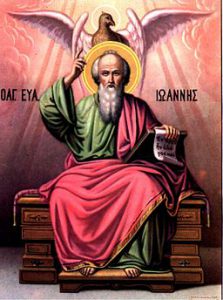 Revelation 22:3 says, “And there will no longer be any curse. And the throne of God and of the Lamb will be in it, and his servants will serve him.”
Revelation 22:3 says, “And there will no longer be any curse. And the throne of God and of the Lamb will be in it, and his servants will serve him.”
The term priests occurs three times in Revelation, all with respect to the people of God (1:6, 5:10, 20:6). As John Oswalt notes, the Old Testament priesthood is fundamentally a calling to be a servant of God (Isaiah 40-66, 460). When Revelation 22:3 says, “his servants will serve him,” it is referring to God’s people as his servants. When one relates this verse to the title “priests” from earlier in Revelation, one can see that the people of God are his priestly servants. Revelation 22:3 provides one of the few indications about what the people of God will be doing in the New Jerusalem. It has connections to biblical theology and to the theology of Revelation. Servants of God is a common way to refer to the people of God in the Old Testament. God’s people are supposed to serve him and him only (Exod. 20:3-5; Deut. 6:13). The people of the New Jerusalem offer to God what he has always wanted from his people, that is, their faithful, devoted service. Never again will anyone who claims to be a servant of God play the harlot by serving other gods or idols, as some in the seven churches were still doing (Rev. 2:14; 3:20).
The verb translated “serve” (latreuō) in Revelation 22:3 is reserved in the Septuagint and in the New Testament for religious service to either God or to false gods. Because of this, it is often translated “worship.” Given the rich Exodus typology in the book of Revelation, it seems likely that “his servants will serve him” is related to the final stage of the fulfillment of the Exodus (22:3). In his conflict with Pharaoh, God repeatedly commands Pharaoh to let his people go so that they might serve him (for example, Exod. 4:23; 8:1). As several verses make clear, their service to God involves celebrating a festival and offering sacrifices to him (Exod. 5:1-3; 8:25-29). This is the type of service to God that one would expect from a people who are to become God’s “kingdom of priests” and his “holy nation” at Mount Sinai (Exod. 19:6; Rev. 1:6; 5:10). After the Exodus, God speaks about his people as his servants whom he brought out of Egypt to serve him (Lev. 25:42, 55). Similarly, in Revelation 22:3, God’s people are finally able to serve God freely and joyfully in the New Jerusalem, because God has delivered them from the oppression of the Dragon and the Beast. Revelation 14:1-4 provides a glimpse of the worship or service of the people of God.
The special priestly character of the service of God’s people becomes clearer when one views “his servants will serve him” (22:3) alongside of other verses in Revelation. In Revelation 7:14-15, God’s “servants” (7:3) are “before the throne of God and are serving him day and night in his temple” (7:15). Serving God before his throne and in his temple is clearly priestly service. According to Ezekiel 43:7, God’s throne on earth is located within the temple. The New Jerusalem of Revelation 21-22 contains God’s throne; it is the “temple” that Revelation 7:15 anticipates. Thus, Revelation 7:14-15 portrays God’s servants as his priests who serve him “in his temple” (7:15). In other words, to be God’s servants is also to be his priests. These are both terms for the people of God in Revelation and it appears that they are related terms (for priests, see Rev. 1:6; 5:10; 20:6; for servants, see 1:1; 2:20; 7:3; 19:2, 5; 22:3). The people of God are all his priestly servants. This is quite an honor for Gentiles and for those Jews who are not from the tribe of Levi. It is an honor that goes beyond Old Testament expectations, although Isaiah does appear to foresee a place for some Gentiles to serve as priests and Levites (Isa. 66:21).
In Revelation 22:4, John will go further and indicate a relationship between the priestly servants of God and the high priests of the Old Testament (see next post in this series).
Sources:
These paragraphs represent an edited portion of my book:
Paul Hoskins, The Book of Revelation: A Theological and Exegetical Commentary, pp. 466-8 (these pages provide further sources and footnotes that I have omitted above).
